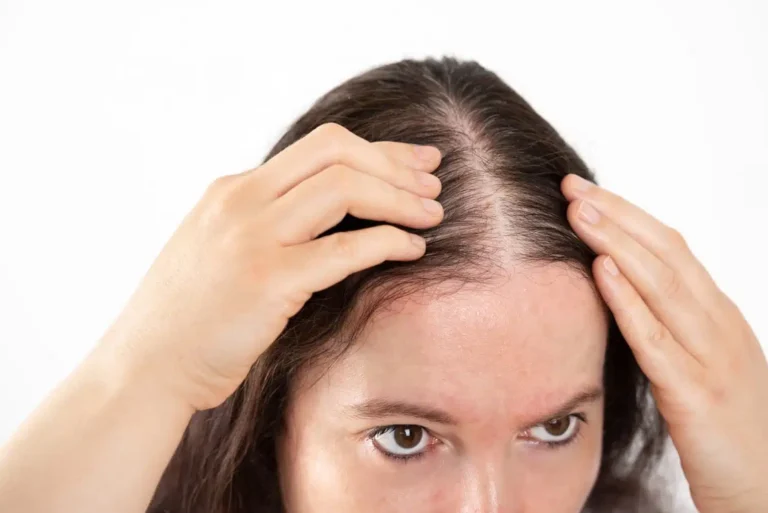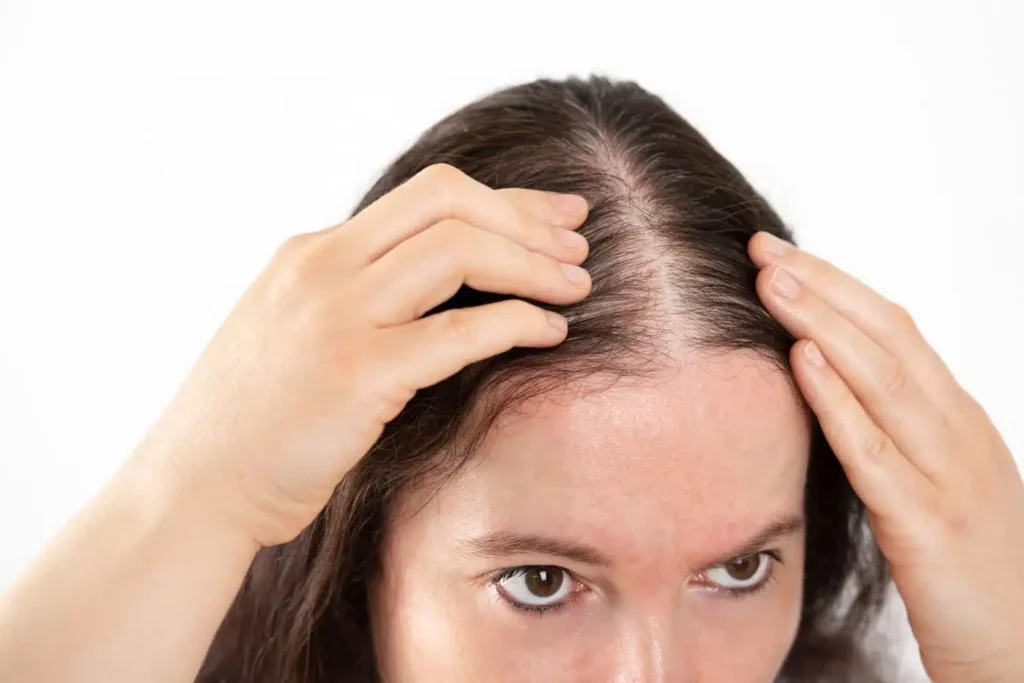
Alopecia affects everyone
It is often thought that only men suffer from hair loss, but to a lesser extent, women are also exposed to baldness problems. In women, alopecia is generally more diffuse, but in all cases, it is much more difficult to experience. The woman who loses her hair feels completely diminished in her powers of seduction and above all, it is much more difficult for her to adapt her hairstyle as some men do with a shaved head style cut. When the morning mirror becomes an enemy, when we notice day after day that many hairs have remained in the comb or brush, we must act instead of isolating ourselves. Nowadays, aesthetic care techniques provide many solutions to hair loss problems, the essential step being to go to the right place. Although very minimally invasive, these different techniques must be implemented in a beauty care center where the practitioners are highly specialized to be able to offer their patients the most appropriate way for their particular problem. They must also be able to provide transparent and documented information on their choices and work in a flawless health environment.

Better understanding of the different causes of hair loss in women
Hair is one of a woman’s attractive assets and when she is faced with alopecia, she can sometimes have a demeaning view of herself. Hair loss sometimes leads women to question their femininity. Let’s take a detailed look at the factors responsible for hair loss in women.
Hair loss in women a genetic predisposition
The primary cause of hair loss in women is none other than heredity, what we call androgenetic alopecia. What you need to know is that the hair life cycle is accelerated by the production of androgens (male hormones). Over time, hair follicles weaken and hair gradually becomes thin. With this in mind, the hair mass loses volume with bald areas at the level of the part, at the top of the head, and even on the hairlines.
Apart from having a family history, if a woman is often subject to stress, the two factors combined are likely to increase androgen secretion inevitably leading to hair loss.
This type of alopecia can progress if not treated in time.
Hair loss in women hormonal disruption
It is no surprise that a hormonal imbalance linked to estrogen hormones influences the scalp. Likewise, it should be noted that this hair loss is likely to occur during 3 periods in a woman’s life:
- During the menstrual cycle, hair tends to become fragile, thus reducing hair density. For what? Because the woman’s body produces less estrogen during this period.
- Second, a woman may start losing her hair right after giving birth. This hair loss is the result of a drop in the production of estrogen hormones. This phenomenon is what we call postpartum hair loss. However, this hair loss may be temporary.
- The risk of hair loss increases when a woman goes through menopause. Once again, estrogen hormones find themselves in the dock.
It should also be noted that taking the contraceptive pill (depending on its composition) can have a certain influence on the scalp, thus causing hair loss.
Hair loss in women a nutritional deficiency
As you know, diet plays a fundamental role in our health, including that of our hair. Studies conducted on hair loss have been able to establish a direct link between hair loss and nutritional deficiencies. Indeed, when hair does not have the necessary nutrients such as iron, copper, zinc, and vitamin B… it weakens and begins to fall out.
Hair loss in women: chronic stress
Hair loss can also be caused by a stressful lifestyle. For example, emotional shock, chronic stress or even periods of anxiety can lead to hair loss.
Furthermore, you should know that certain hairstyles, taking certain medications and regular use of chemicals can lead to hair loss.
Choosing the right scalp specialist
The primary difficulty with baldness is determining the cause because this requires both a lot of experience and targeted medical examinations. Baldness can indeed have various origins, hormonal changes in women are often caused after childbirth or during menopause, but intense fatigue linked to these phenomena, poorly tolerated drug treatment or a stressful situation can just as well. provoke it. In some cases, hair loss is reversible and there is no need to intervene other than to eliminate the cause, while in other cases it is appropriate to act fairly quickly while the hair follicles are still in sufficient numbers to serve as grafts for hair implantation for example. It is a precise diagnosis carried out by a competent and specialized practitioner which is the key to the individualized treatment to be undertaken to resolve hair loss according to each particular problem. We must keep in mind that when we do not know the exact cause of alopecia, we cannot offer effective treatment.
A solution for every case of hair loss
Depending on the origin of the baldness and its extent, it will be necessary to choose with full knowledge of the facts, following a reliable diagnosis, the technique that is best suited to find an effective and lasting solution. The FUT hair transplant technique is done using strips of scalp which are most often taken from the base of the skull to re-implant them in the bald areas to be treated. The FUE process consists of taking grafts from these areas known to be better filled, but follicular unit after follicular unit, each containing several hairs. To optimize their conservation between collection and reimplantation, they are immersed in a mixture of medicinal and vitamin products, PRP. This FLUE process does not cause any scarring and many grafts can be implanted in just one session. At the cutting edge of contemporary technical progress, the automated Artas process, with its incorporated medical imaging, takes and re-implants a large number of grafts randomly to preserve the hairstyle, both in the donor area and in that of the graft, natural and discreet. Anyone who wants to obtain an immediate result, without waiting for a gradual regrowth of their hair, can also opt for biofiber which consists of implanting artificial hair in the scalp without it being possible to differentiate them or by their texture. nor by their natural hair color.